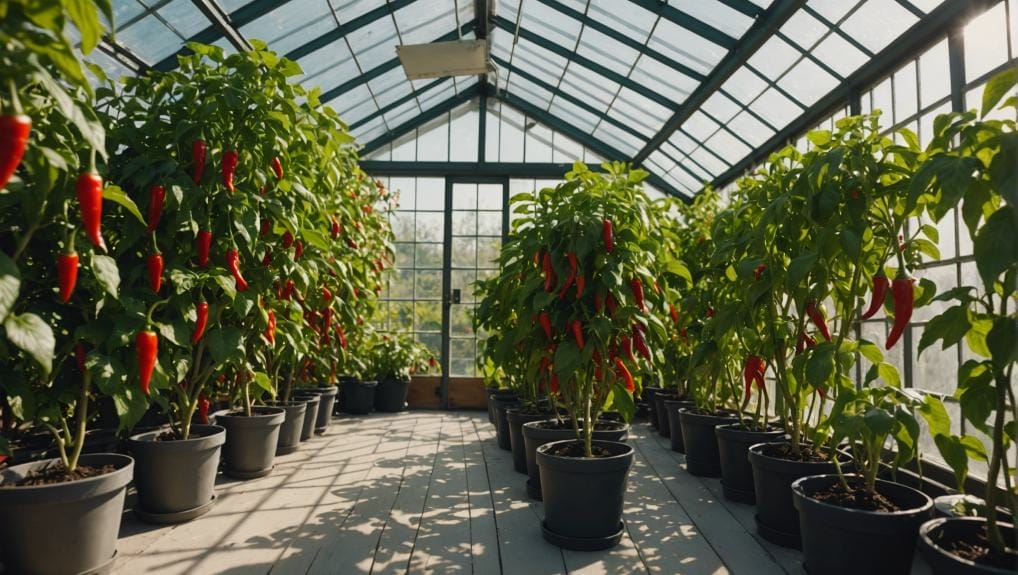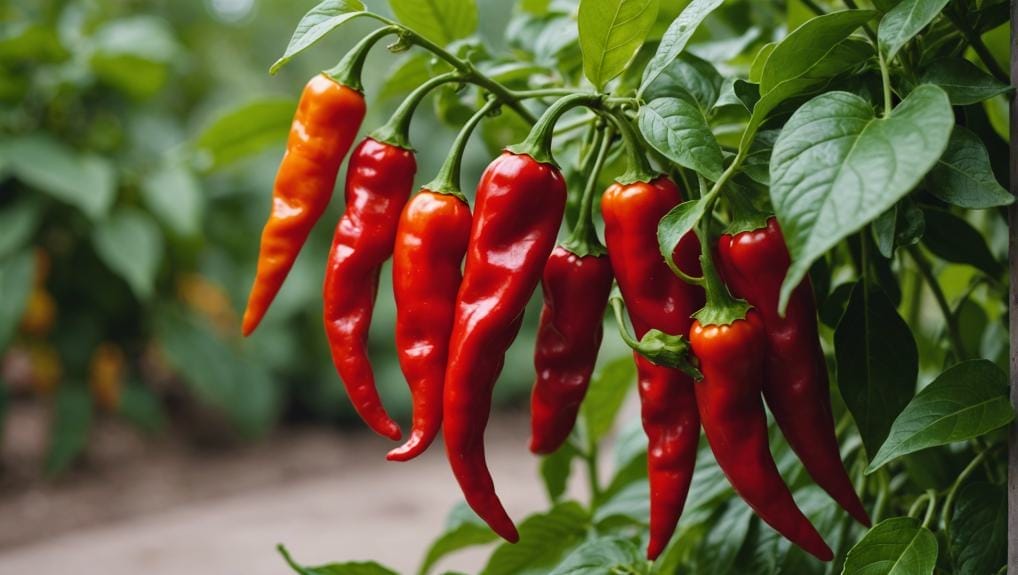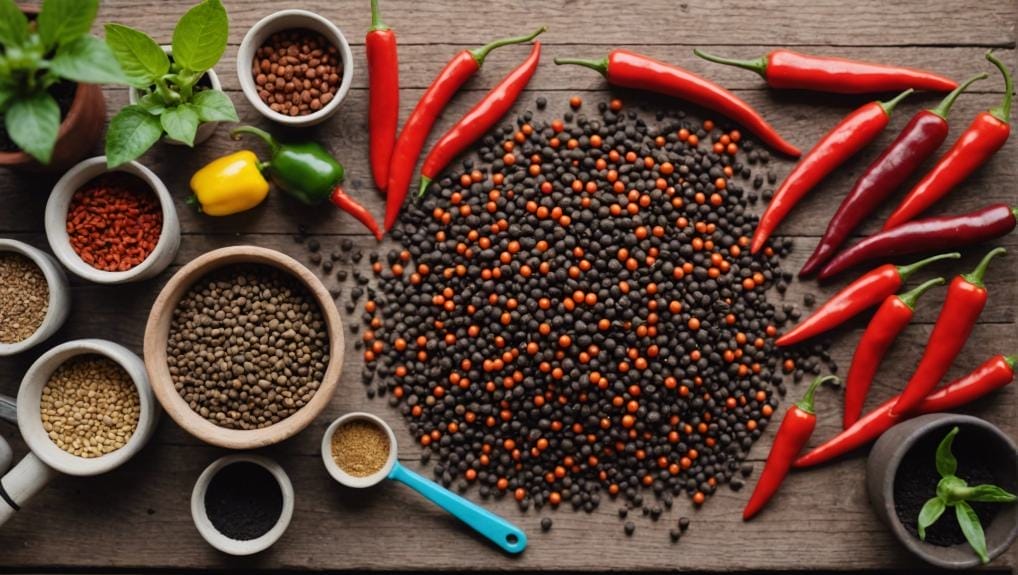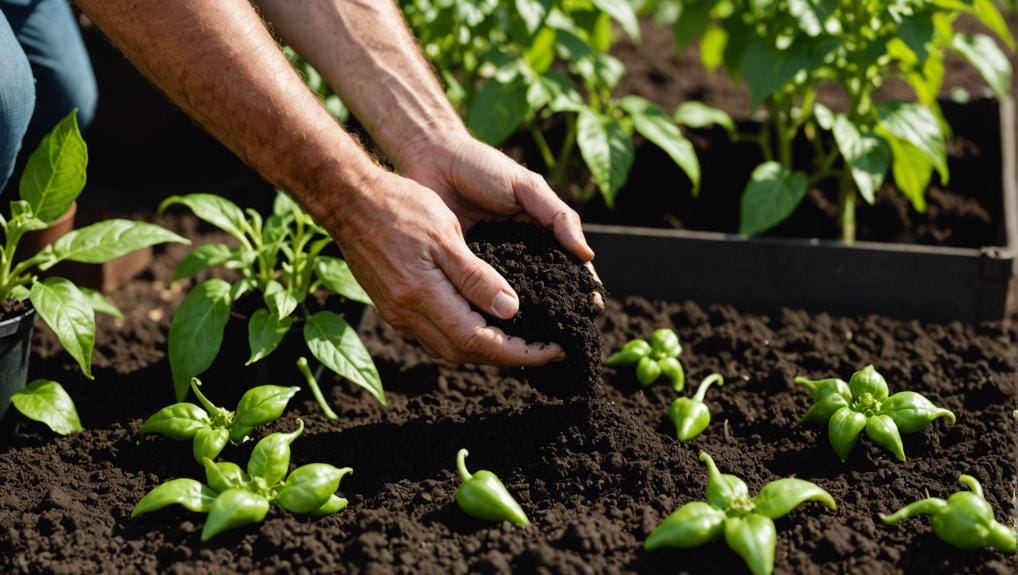If you’ve ever dreamt of cultivating fiery hot peppers in a cooler climate, the key lies in strategic planning and the right approach. By adopting specific practices and being mindful of timing, you can transform your garden into a hot pepper haven, even when the weather isn’t on your side. With a few essential tips and tricks, you’ll be well on your way to unlocking the secrets of growing vibrant hot peppers in cool climates.
Selecting Hot Pepper Varieties
When choosing hot pepper varieties for cool climates, opt for early-maturing options like Hungarian Hot Wax and Ghost Chilli to ensure a successful harvest. In cold regions with short growing seasons, it’s crucial to select peppers that can mature in 75 days or less. Varieties such as Spicy Slice Jalapeño are reliable choices for limited growing time in Northern regions.
These hot pepper options are specifically suited for cool climates where the growing season may be restricted. By choosing peppers with early maturity, you increase your chances of a bountiful harvest before the colder weather sets in. In regions with shorter growing seasons, it’s essential to make the most of the time you have available for cultivation. Hungarian Hot Wax and Ghost Chilli, along with other suitable varieties, are bred to thrive in these conditions, providing you with the best chance of success in your pepper cultivation endeavors.
Choosing the Right Hot Pepper Seeds
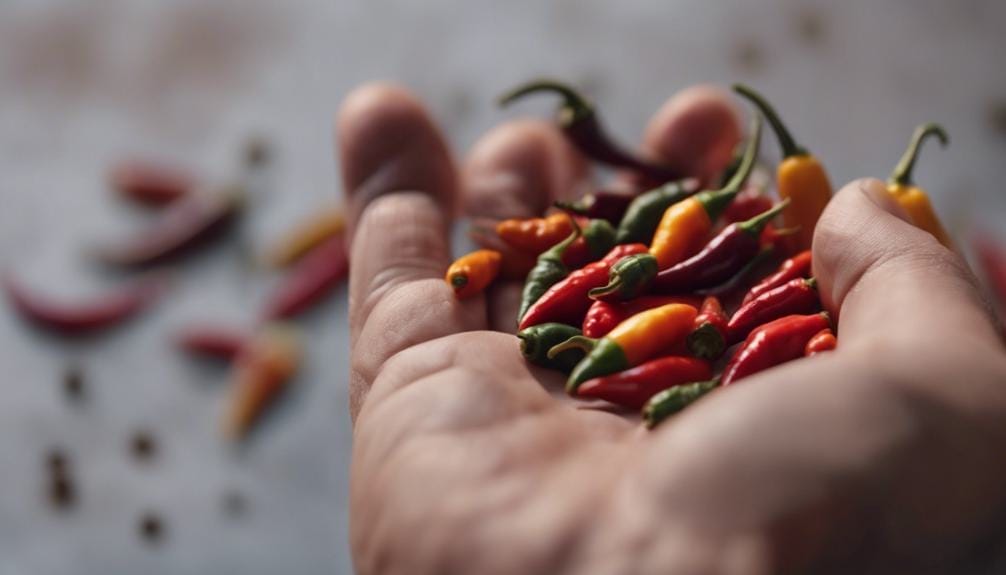
To ensure a successful harvest in cool climates, selecting hot pepper seeds bred for early season production is crucial. Look for hot pepper varieties with a short maturity period of 75 days or less to ensure a quicker harvest in regions with short growing seasons.
When choosing the right hot pepper seeds, consider opting for unique and reliable varieties that are well-suited for cold climates. Some recommended seed providers for hot pepper varieties suitable for cool climates include West Coast Seeds, Sage Garden Greenhouses, and Fruition Seeds.
Hungarian Hot Wax, Ghost Chilli, and Spicy Slice Jalapeño are top choices known for thriving in cold climates with short growing seasons. By selecting hot pepper seeds tailored for early season production and short maturity periods, you can increase your chances of a successful harvest even in cooler climates.
Make sure to choose varieties that are well-adapted to your specific growing conditions for the best results.
Considering Seed Starting Methods
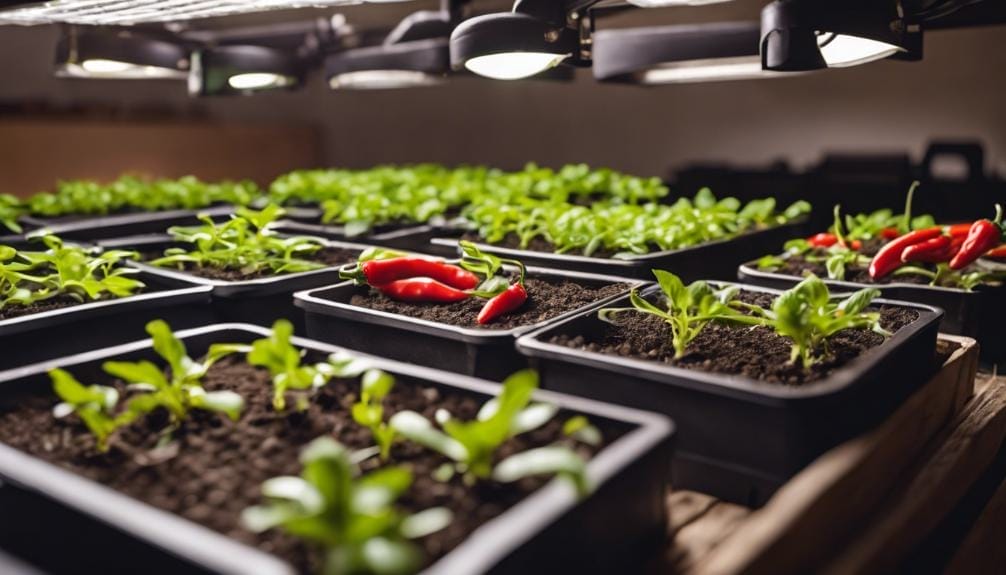
Considering different methods for starting hot pepper seeds is essential for ensuring successful germination and healthy seedling growth. Starting hot peppers indoors provides a controlled environment for optimal germination.
To kickstart the process, using heat mats or locating warm spots indoors can aid in the growth of hot pepper seedlings. Monitoring soil moisture levels is crucial to prevent mold and ensure proper germination of hot pepper seeds.
Once the seeds have sprouted, transferring the seedlings to growing stands with lights will support the healthy development of hot pepper plants. Remember, providing the right seed starting equipment such as pots, potting mix, light, and warmth is essential for the successful growth of hot pepper seedlings.
Evaluating Seedling Care Techniques
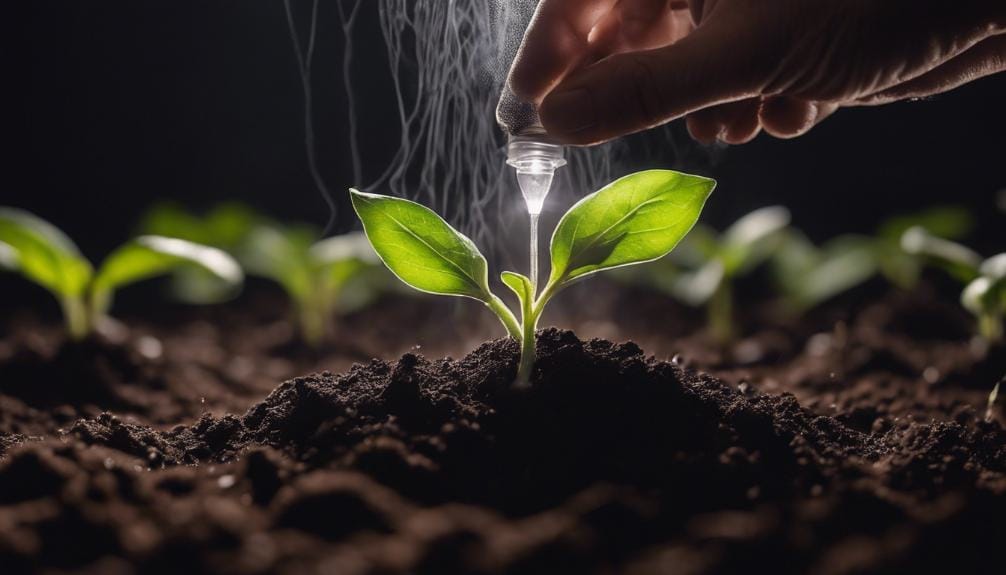
Key practices for successful care of hot pepper seedlings include: using high-quality seed starting soil mix at the appropriate depth, creating warm germination conditions, and keeping the soil consistently moist for sprouting. Another practice is removing indoor blossoms before transplanting to encourage root establishment. Additionally, selecting the right soil, providing adequate lighting, and choosing suitable containers are crucial for robust seedling growth. Pruning pepper plants before transplanting can also lead to bushier plants and enhance fruit production. By following these techniques, you can establish a strong foundation for healthy pepper plants in your cool climate.
Understanding Seedling Transplant Timing
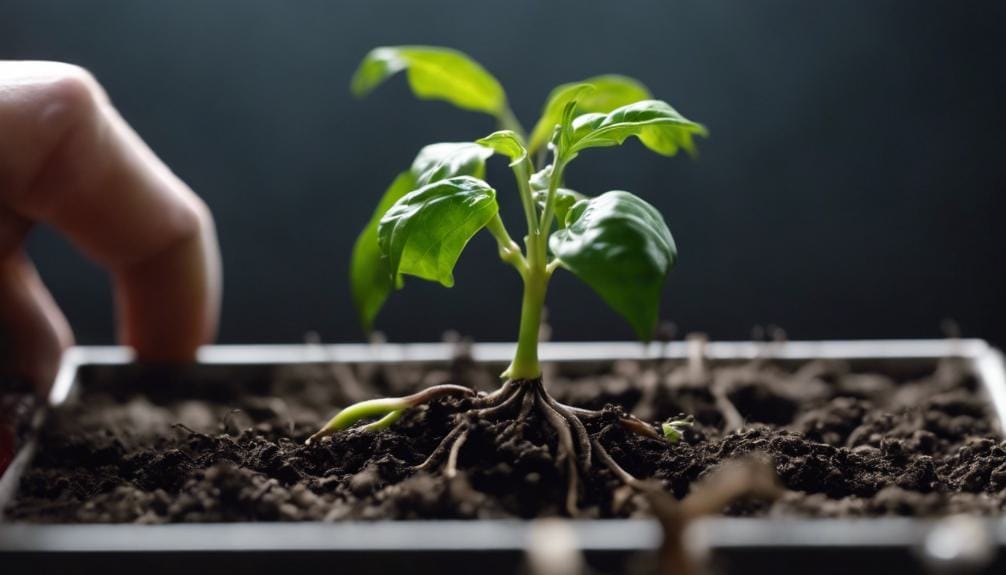
When transplanting hot pepper seedlings outdoors, timing plays a crucial role in ensuring optimal growth and successful establishment in your cool climate. It’s recommended to transplant the seedlings 1-2 weeks after the last frost date to avoid any potential frost damage.
Wait until evening temperatures consistently stay above 50 degrees Fahrenheit before transplanting to provide the seedlings with a warm and favorable environment. For a head start, consider starting seeds indoors 7-8 weeks before the last frost date to help the seedlings grow strong and healthy.
Greenhouses offer an advantage by allowing you to start hot pepper seeds even earlier, around 9-12 weeks in advance, providing an extended growing season. If you prefer a quicker option, buying mature 12-18 inch tall plants for transplanting can ensure better yield potential.
Exploring Container Gardening Options
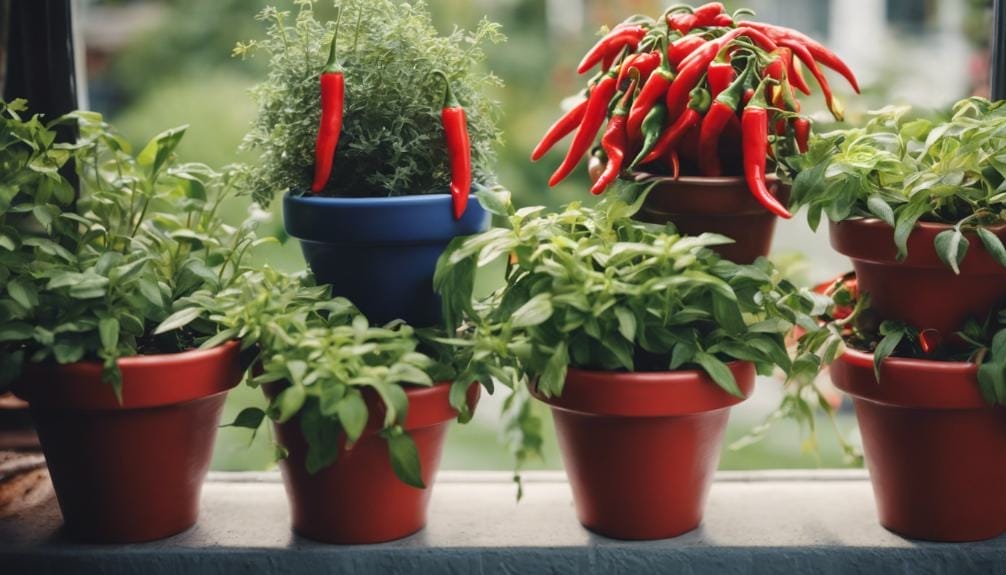
Container gardening offers a versatile and practical solution for cultivating hot peppers in cool climates like Zone 3. In these regions, where temperatures can be challenging for hot pepper plants, container gardening provides the flexibility to move your plants to warmer spots for optimal growth.
One advantage of growing hot peppers in containers is that they tend to fruit earlier due to the controlled conditions you can create. Using fabric grow bags can further enhance root development and reduce disease risks for your hot pepper plants.
With container gardening, you can expect bountiful harvests and earlier yields, making it a rewarding option for those in cool climates. By exploring different container gardening options, you can ensure that your hot peppers thrive and produce abundantly, even in Zone 3’s challenging conditions.
Conclusion
Now that you have the right seeds, techniques, and timing down, you’re well on your way to growing hot peppers in cool climates successfully.
Remember to continue providing proper care for your seedlings as they grow and consider container gardening for added flexibility.
With a little patience and attention to detail, you’ll soon be enjoying a bountiful harvest of hot peppers right from your own garden.
Happy growing!

